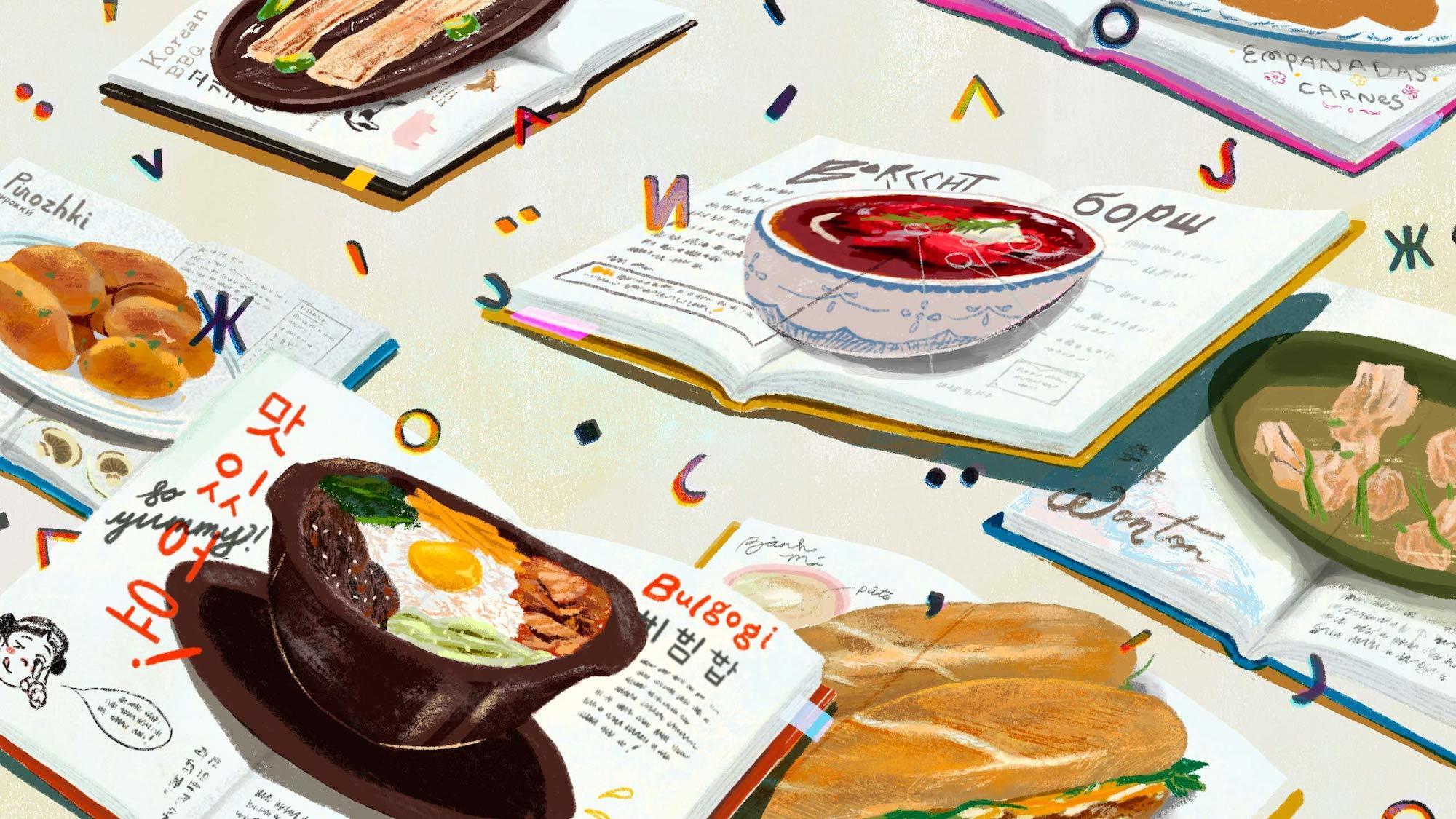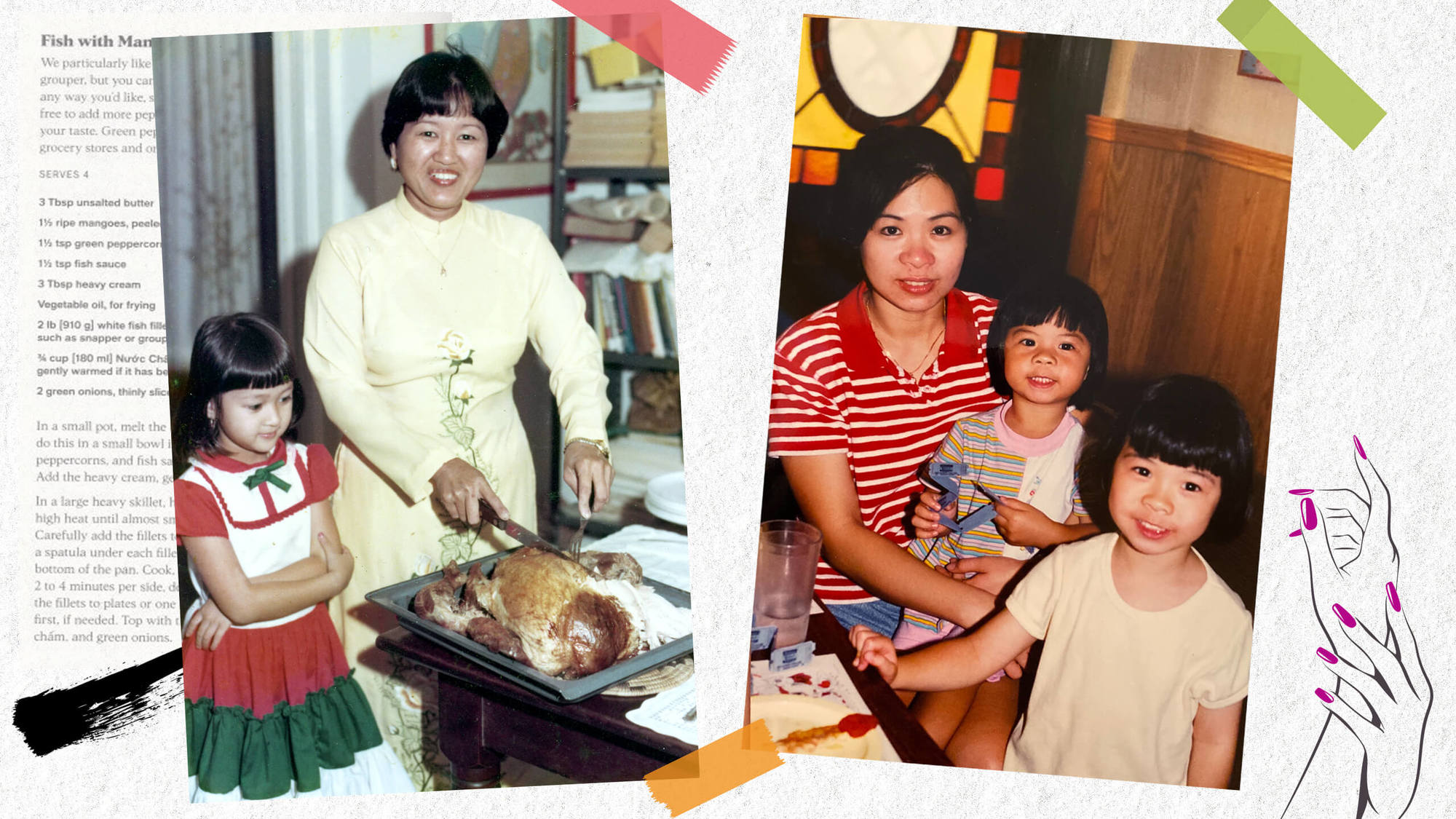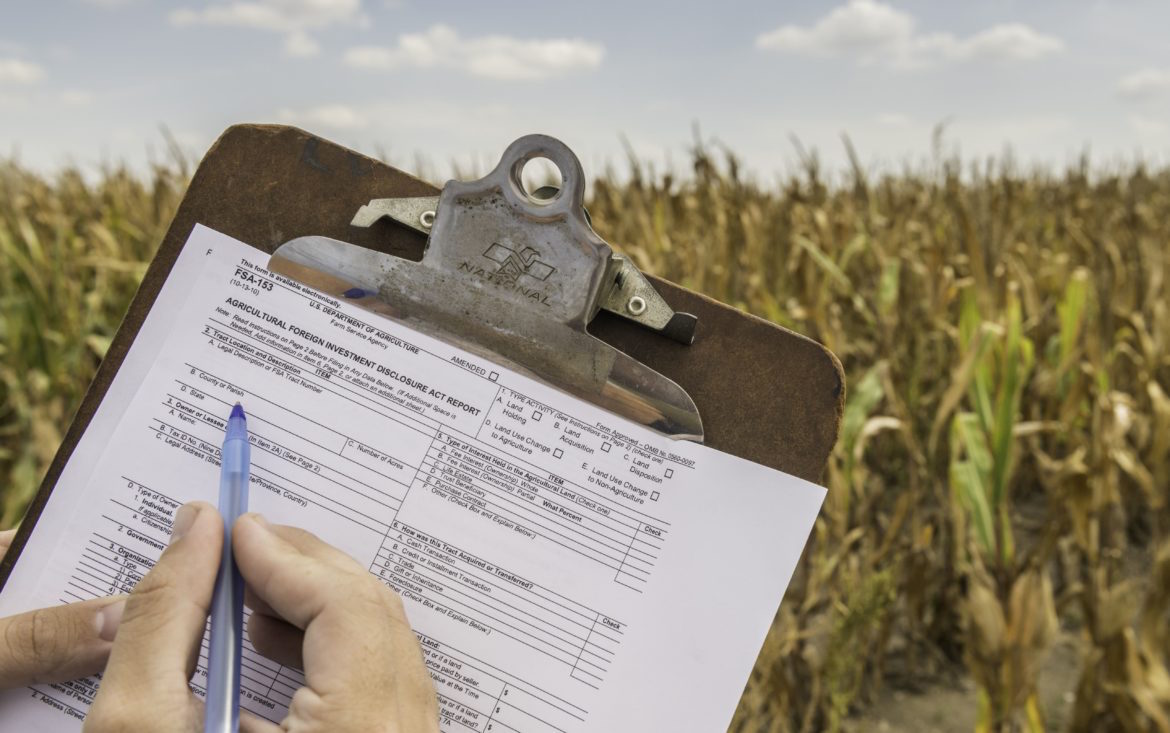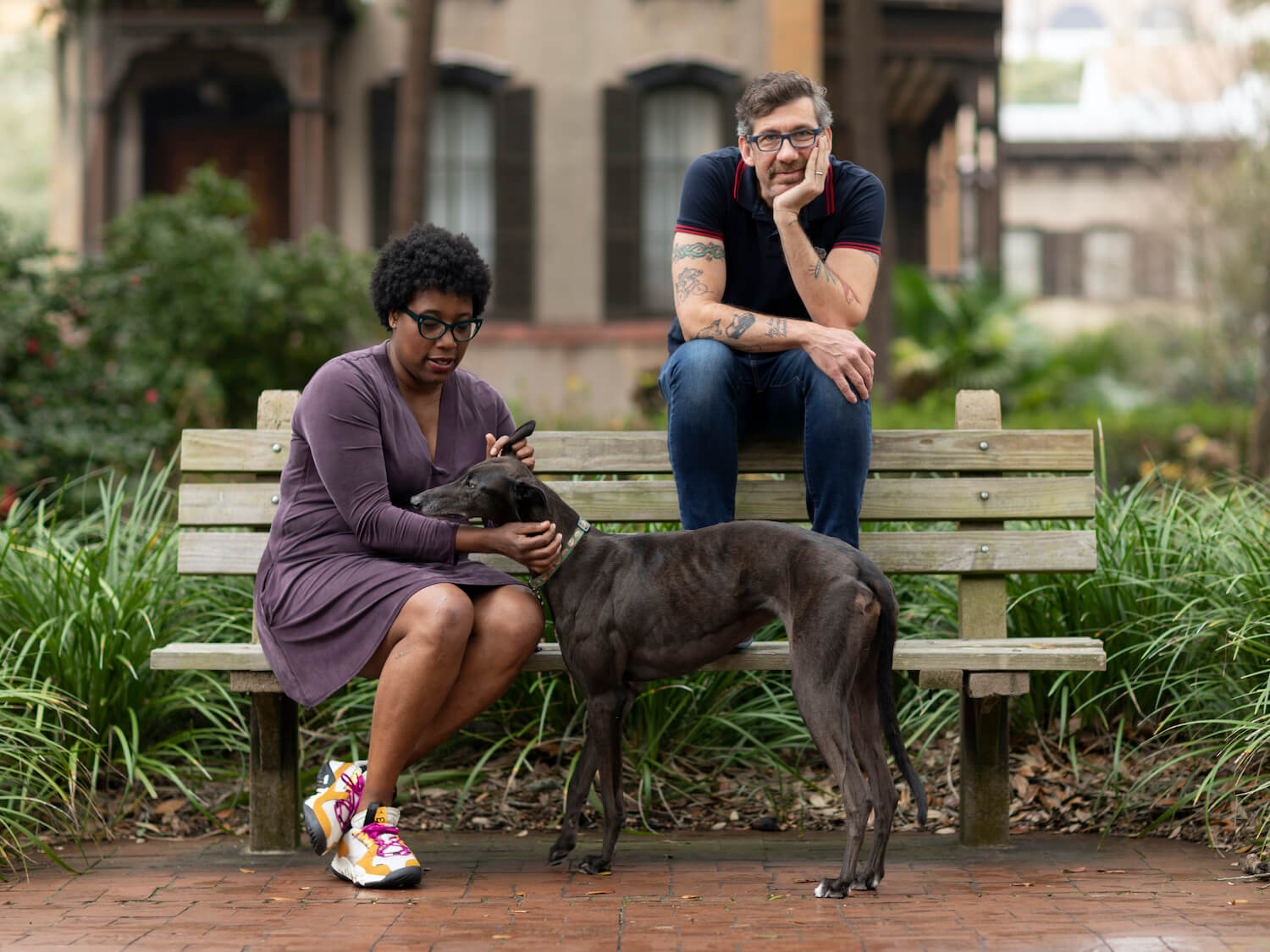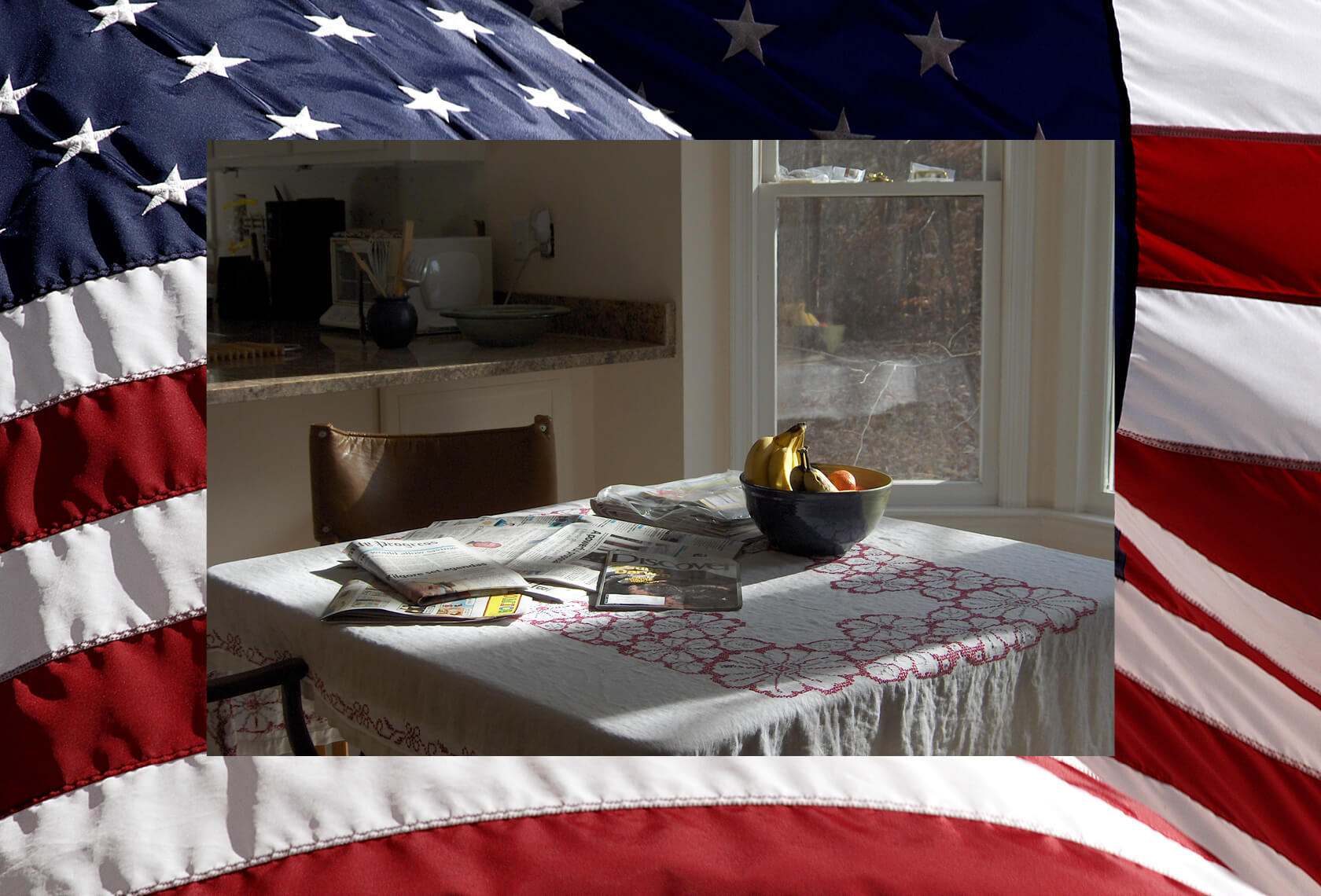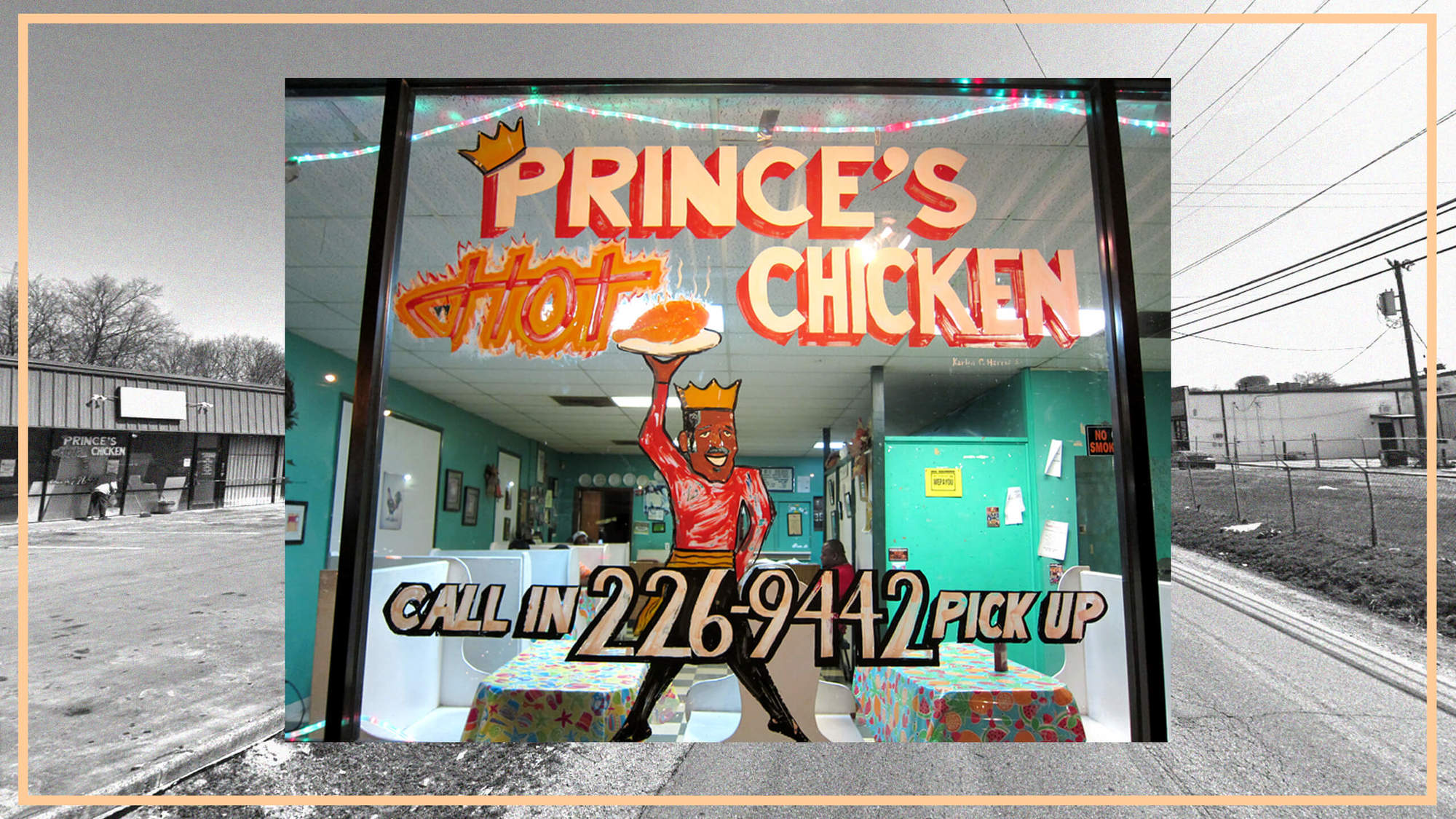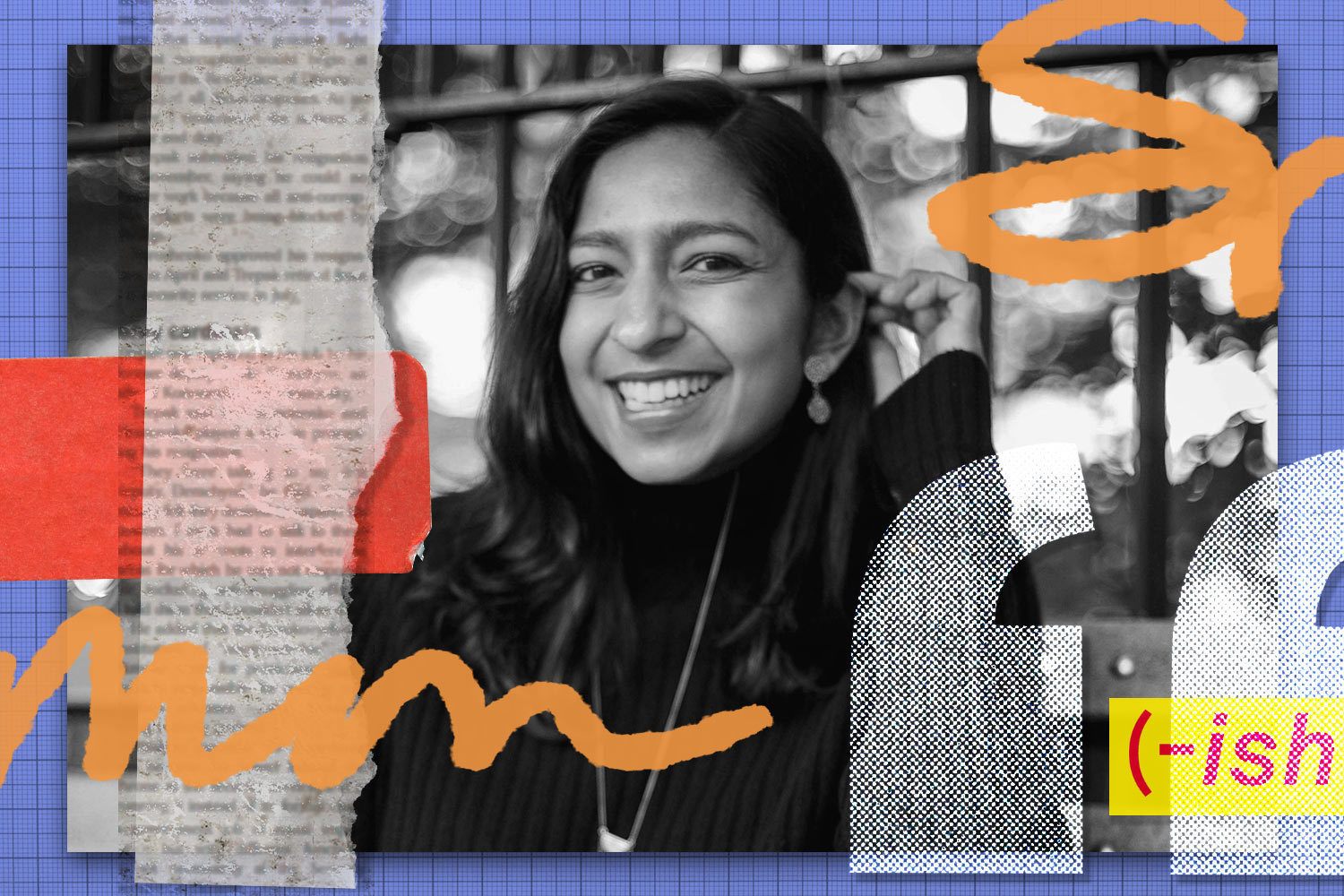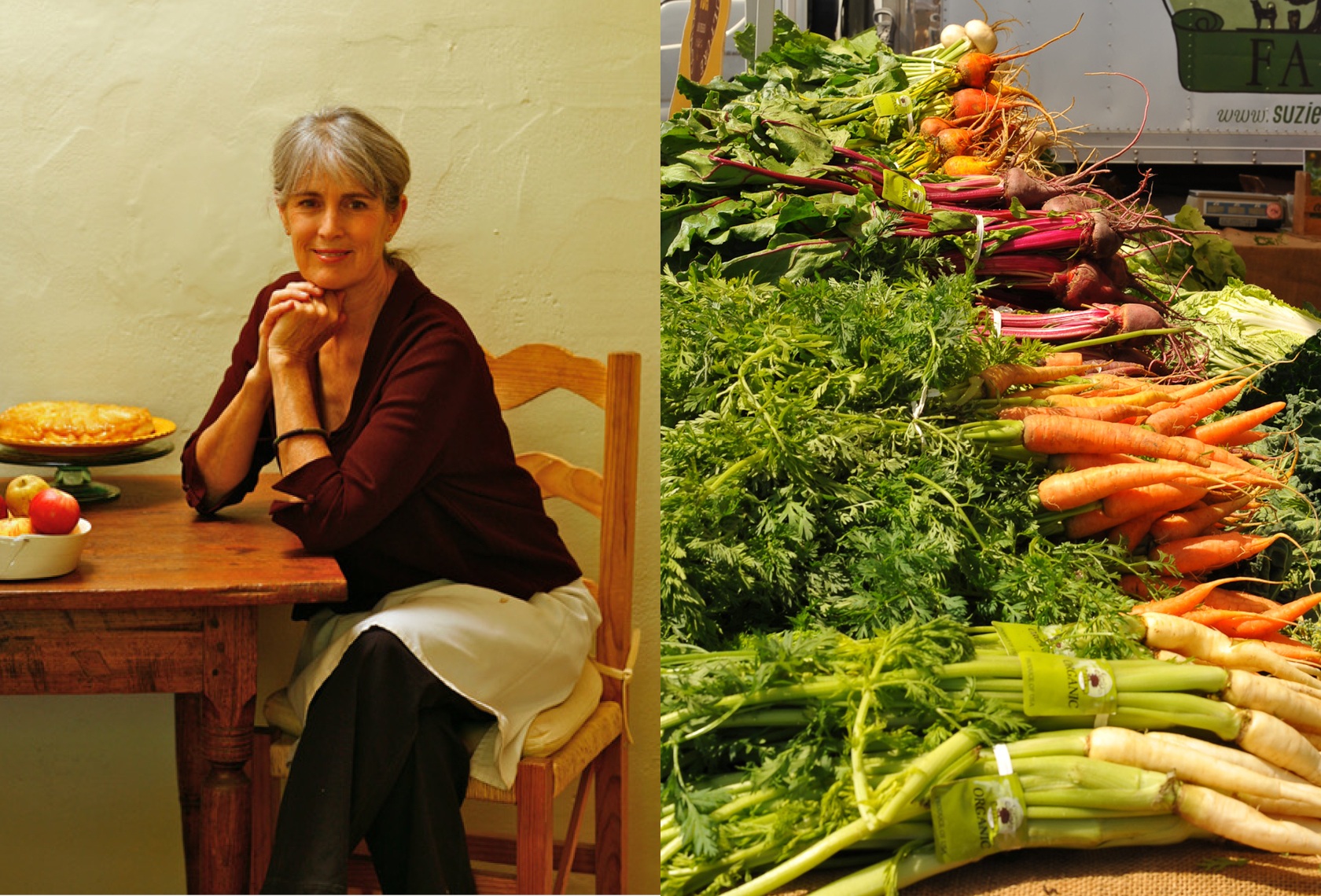In the past, printing technology was a hurdle. But it’s also about publisher buy-in and the author’s wishes—and willingness to do extra labor.
London-based cookbook author Fuchsia Dunlop remembers how she was able to get Chinese characters into her first book.
It was 2001. The software available to her publisher wasn’t equipped to easily insert Chinese characters into Sichuan Cookery, the U.K. book that was later republished stateside as Land of Plenty.
So Dunlop turned to calligrapher Qu Leilei for help.
“He actually gave us a whole sheath of pieces of traditional Chinese calligraphy paper with every character for all the dishes, hand-scripted.” Looking back, she said, “it all sounds so antique.”
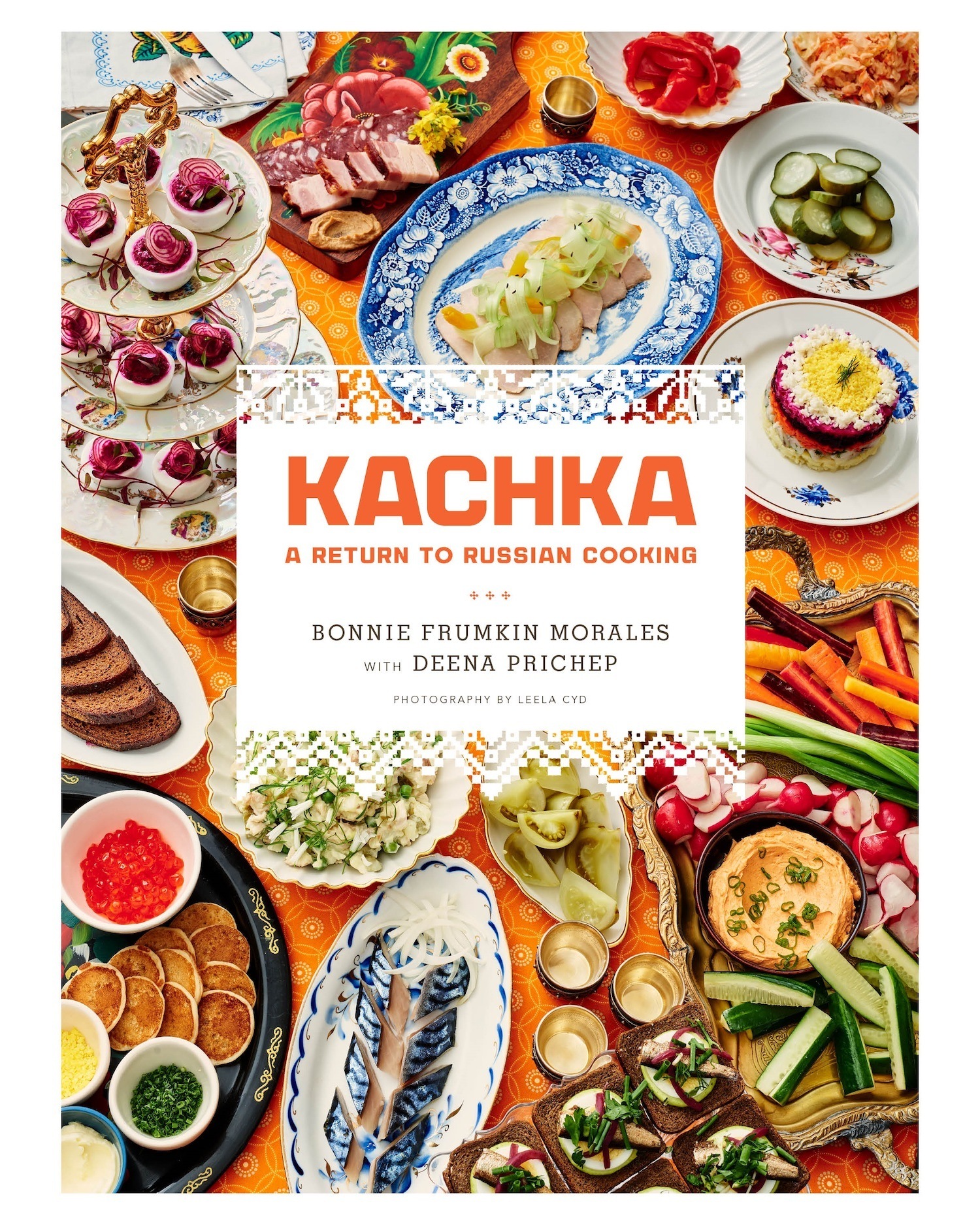
Courtesy of Flatiron Books
Bonnie Frumkin Morales, a Portland-based chef who co-authored the 2017 cookbook Kachka, didn’t think it was appropriate not to have Cyrillic in there. As the child of immigrants from Belarus, Morales is aware that her audience includes Russian speakers and readers.
Dunlop was willing to do this because, at their best, cookbooks are not just recipe collections, but rather a glimpse into how people live and eat. For many cookbook authors, understanding a culture’s food requires knowing how it names, describes, and writes about its dishes. To leave out all traces of the original language or writing system is to miss some cultural and emotional resonances of a given food.
Bonnie Frumkin Morales, a Portland-based chef who co-authored the 2017 cookbook Kachka: A Return to Russian Cooking (Flatiron Books) with Deena Prichep, knew that she’d include Russian terms in the book. Doing otherwise never crossed her mind.
“I didn’t think that it was appropriate not to have the Cyrillic in there,” she said during a phone interview. Translation is always an option, “but that loses something, and I think you have to give [the dish] some honor in its actual native language.”
In Kachka, recipe titles and food terms are written first in English, then in Cyrillic. For most of the book’s recipes, save for the few where there is only an English name, Morales includes the transliteration, which converts the Russian script into English writing.
As the child of immigrants from Belarus, Morales is aware that her audience includes Russian speakers and readers. “A lot of people who have read the Kachka cookbook have reached out to me and thanked me because they feel seen, and they feel that their culture has been represented for once,” she said.
“I think you have to give [the dish] some honor in its actual native language.”
She added that many people from the former Soviet republics—the region covered in both Kachka the book and the Portland, Oregon, restaurant of the same name—feel that their cuisine has generally been ignored by much of the world. “It’s just like this black sheep of the culinary world,” she said. So when they see these recipes written out in Cyrillic, “they connect with it.”
That’s key because, as Dunlop said, English terms are “always approximation.” She cited a pragmatic reason to use non-English script and words: the point-at-the-recipe method. “If you label an ingredient or a Chinese cooking method or a dish, you need the Chinese characters” alongside the English. Having the characters handy makes it far easier when non-native speakers shop for ingredients in ethnic or international supermarkets; readers can simply show the printed information to staff.
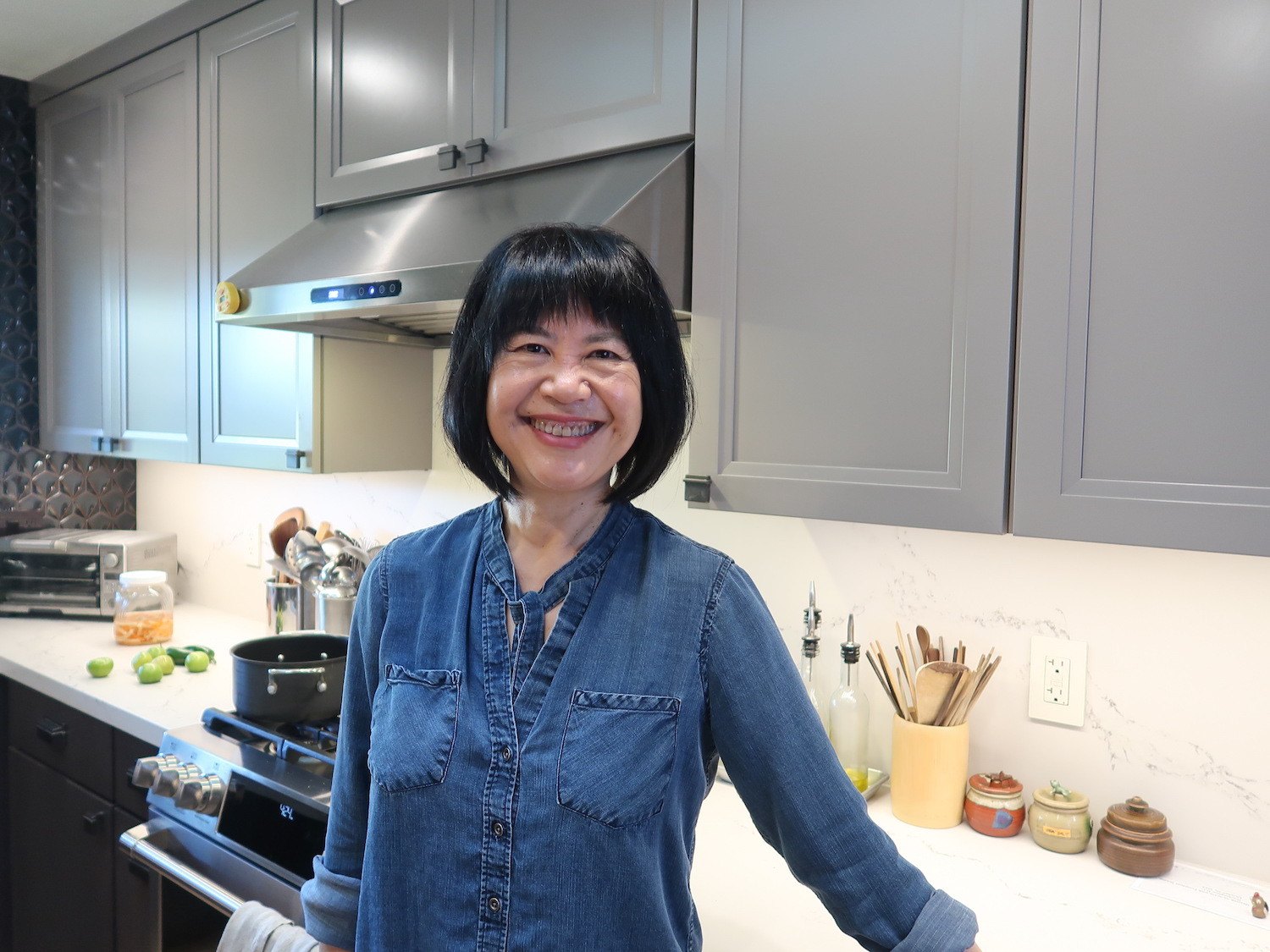
Andrea Nguyen is a James Beard Award-winning author of cookbooks such as Vietnamese Food Any Day. In that book, Vietnamese accent marks or diacritics appear only when the word is not already part of the English lexicon.
Courtesy of Andrea Nguyen
But language isn’t static. Non-English words work themselves into American English and vice versa.
Andrea Nguyen, a James Beard Award-winning author of cookbooks like Vietnamese Food Any Day (Ten Speed Press), has employed Vietnamese diacritics or accent marks off and on throughout her career; in that most recent book, they appear only when the word is not already part of the English lexicon.
“Words like banh mi and pho are part of the English dictionary,” no accents needed, Nguyen said over the phone.
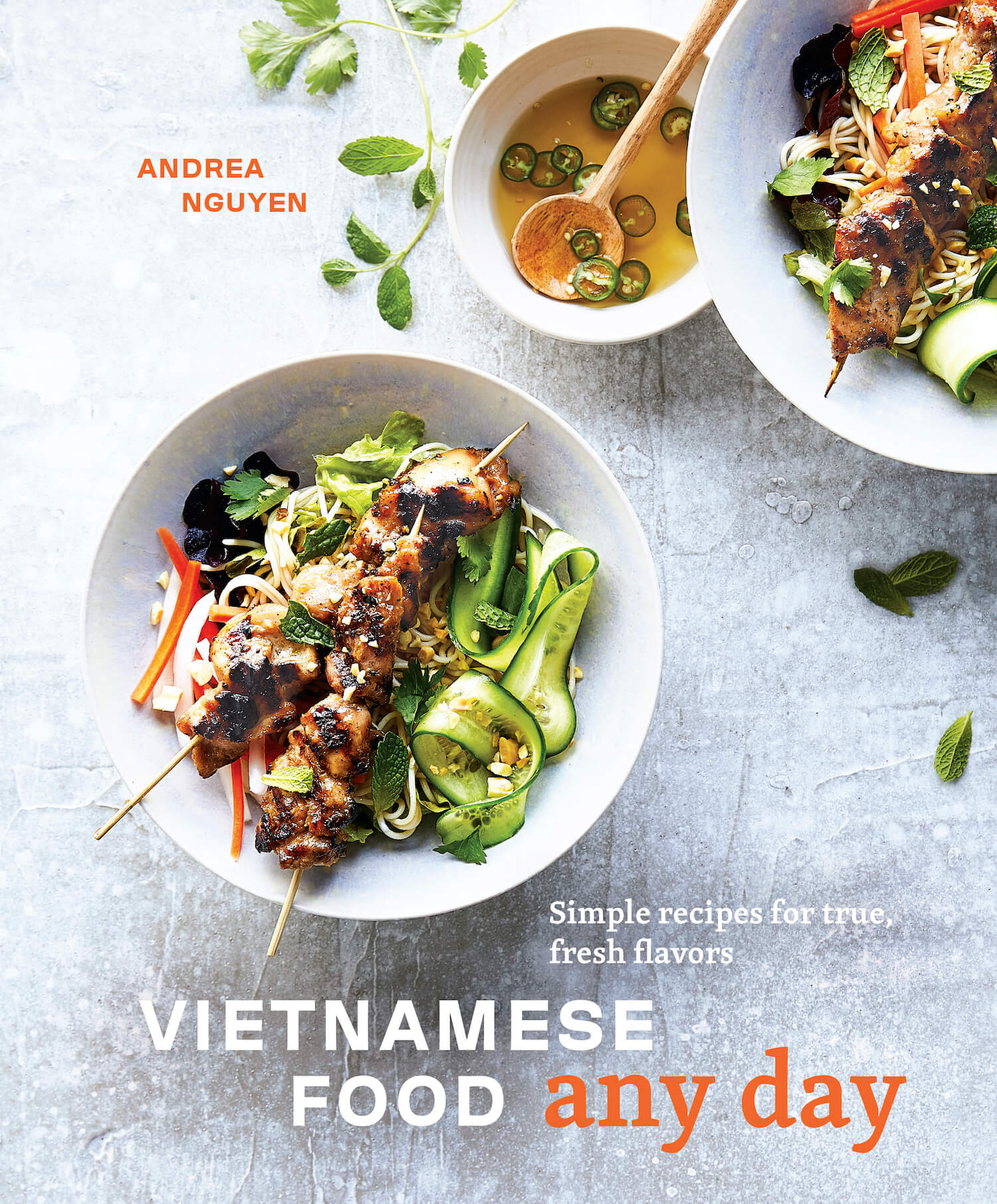
Ten Speed Press
Nguyen included Vietnamese accent marks in narrative sections of her book only “to signal that this is a book that bridges.”
She also uses English terms that have no direct Vietnamese equivalent: “Some of the recipes are dishes that I can’t quite translate into Vietnamese, like no-churn Vietnamese coffee ice cream. I’m like, ‘So how do I do that?’”
Nguyen included diacritics in narrative sections of the book only—not in the section titles or recipe titles, most of which give recipe names in translation—“to signal that this is a book that bridges,” she explained. “And that’s really important to me: to really have empathy for my readership.” Nguyen knew that many of her readers would want “an insider’s perspective on language,” she explained, hence why the diacritics are still there in places.
Artist Robin Ha didn’t have a grand plan for what to write in English and what to write in Hangul, the writing system for Korean, in her illustrated cookbook Cook Korean!: A Comic Book With Recipes (Ten Speed Press). Ha, who was born in Seoul and lives in Virginia, characterized her approach as “very random” although, she said, “I think I subconsciously chose ingredients that are very unique to Korea” to spell out in Hangul, rather than in transliteration or translation.
That list includes ingredients like naengmyeon noodles or the yellow pickled radish called danmuji. Ha added that while including the Hangul was a personal preference, “for books that are intended to be read by an [non-Korean-speaking] American audience, I really don’t think it’s necessary.”
For Lesley Téllez, a New York-based journalist and author of the 2015 book Eat Mexico: Recipes and Stories From Mexico City’s Streets, Markets & Fondas (Kyle Books), the decision-making process wasn’t particularly fraught. In the book, she placed English translations beneath recipe titles.
“I think I subconsciously chose ingredients that are very unique to Korea” to spell out in Hangul, rather than in transliteration or translation.
“I don’t recall … having any push and pull, like ‘I need you to include less Spanish’ or ‘We can’t get these accent marks right,’” said Téllez. But she noted that proofreading the Spanish was entirely her own responsibility, made considerably easier by the fact that she is a native speaker.
Nguyen also proofreads the Vietnamese and other Asian scripts in her manuscripts, poring over them multiple times before they go to print. While most publishers use in-house proofreaders for English text, the onus of finding someone to proofread a second language very often falls on the author. If the authors themselves do not read the language fluently, they may ask people they know for help; such was the case for Danette St. Onge, a London- and Paris-based food and travel writer. She enlisted relatives to proofread her 2017 book, The Better-than-Takeout Thai Cookbook (Rockridge Press).
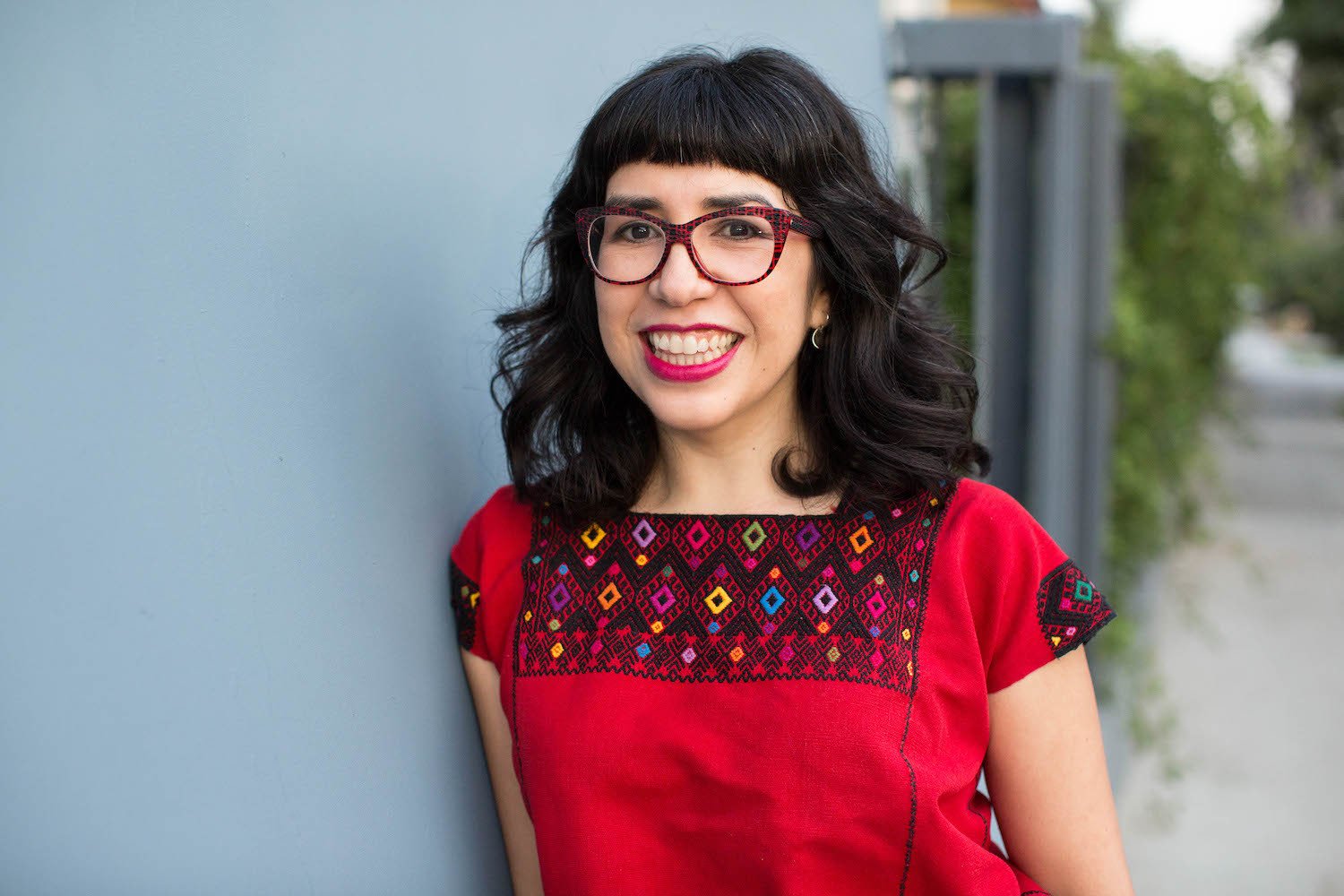
Lesley Téllez is a New York-based journalist and author of Eat Mexico: Recipes and Stories From Mexico City’s Streets, Markets & Fondas. Téllez placed English translations beneath recipe titles in her 2015 book.
Ilene Squires Photography
In addition to proofreading, printing itself has historically been a hurdle when publishing content in languages less commonly printed in the United States. Technical constraints were a longtime barrier because including non-English script often depended on what was technically possible—and affordable—at the time of design and publication.
When Nguyen started writing cookbooks, the designers at Ten Speed Press, one of the largest cookbook publishers in the country, had to input the diacritics manually. It was easy to make mistakes, and when her first cookbook came out in 2006, there weren’t many fonts beyond Times New Roman and Arial at the disposal of the author and publisher.
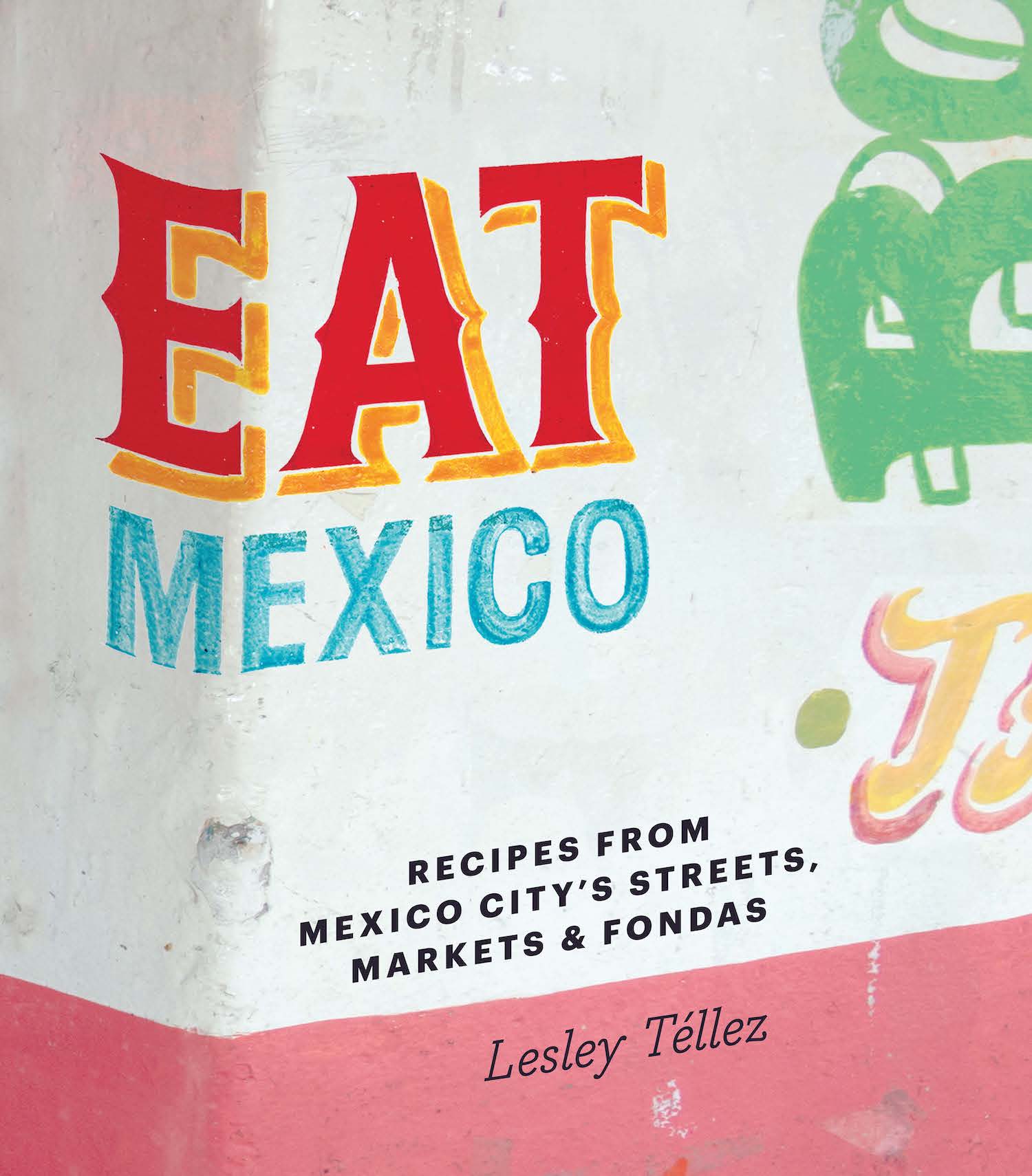
MiniSuper Studio
Téllez said proofreading the Spanish in her 2015 book was her own responsibility but was easier since she is a native speaker.
Betsy Stromberg, Ten Speed’s senior art director, said over email: “We basically have to create a little drawing of the character if it doesn’t exist within the font itself.” In most cases, the designer will then paste the character into the text as an image, adjusting it to make sure it doesn’t look out of place.
“Even 10 years ago, it was kind of harder to find cool typefaces that had a lot of foreign-language characters,” explained Stromberg. “So it did kind of affect the design when you’re stuck between a couple of typefaces that were almost default.”
When writer and scholar Darra Goldstein published her debut Russian cookbook—A Taste of Russia: A Cookbook of Russian Hospitality (Random House)—in 1983, she was only able to present Russian recipe names like kholodets, meat in aspic, in transliteration, using Roman characters to re-create Cyrillic-based words.
“I’m pretty sure it was too expensive to set the type in Cyrillic, so I agreed to have transliteration instead,” Goldstein said. When the book came out, Cyrillic was also “complicated to produce in word-processing programs on early desktop computers.” For the second edition, released in 1999, she said, “I really wanted the Cyrillic there, just because to me it’s so beautiful to look at.” In Goldstein’s most recent book, Beyond the North Wind: Russia in Recipes and Lore (also Ten Speed), for which Stromberg worked on the book design, the Cyrillic is in red. “Honestly, it’s what jumps off the page!” said Goldstein.
For Goldstein, the emergence of the iMac was a game-changer. The computer made it easier for her to switch between fonts, and between English and other scripts, allowing her to include Cyrillic wherever she wanted. The transliterations aren’t completely gone, however; in Beyond the North Wind, they simply live in the headnotes that precede recipes’ ingredient lists and instructions. That way, “people can say what the Russian word is,” said Goldstein. “So that it’s not completely foreign.”
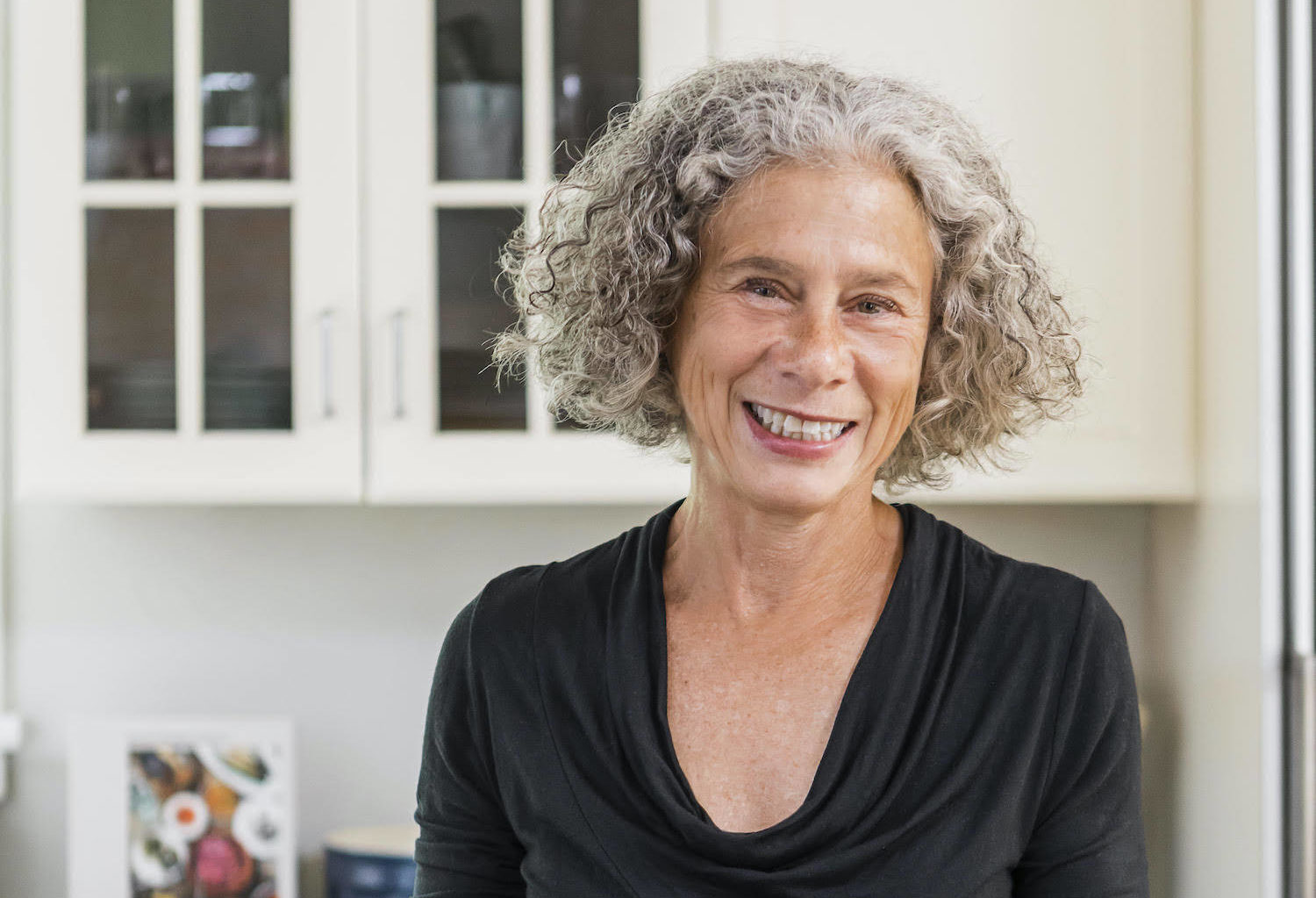
When Darra Goldstein published her debut Russian cookbook in 1983, she was only able to present Russian recipe names in transliteration, using Roman characters to re-create Cyrillic-based words.
Joyelle West
Whether the original writing system is included and to what extent can also depend on the publisher.
“Obviously, it’s much harder for us to proofread in another language,” said Leyla Moushabeck, acquisitions editor for cookbooks at Interlink Publishing, an independent publisher in Massachusetts. “There might be regional differences in the names of the dishes, so it’s not as cut and dry as just finding someone who speaks that language.”
“I feel like it’s easier to get a foreign alphabet in a book than it is to say, ask for another 50 pages.”
Founded over 30 years ago by her father Michel Moushabeck, Interlink has published cookbooks by authors from a wide range of countries and cultural backgrounds. One of its most recent releases is Parwana: Recipes and Stories From an Afghan Kitchen by Durkhanai Ayubi, an Australia-based author of Afghan descent. In Parwana, recipe names are typically presented three ways at once; a transliteration of the recipe name appears in large, bold text, with a line of sprawling Arabic script just beneath, usually with a translation in the top right corner. The dish banjaan borani, for example, is rendered in English as “braised eggplant with yogurt dressing.”
For books like Parwana, Ms. Moushabeck said, whether to include one or all of these elements is usually a conversation the cookbook team will have with the author early on—and it can depend on whether the author feels that it’s necessary to an individual recipe.
Being independent also gives Interlink the creative freedom for Interlink to publish the books they want. “We have a lot of creative freedom to publish what we really believe in,” she said.
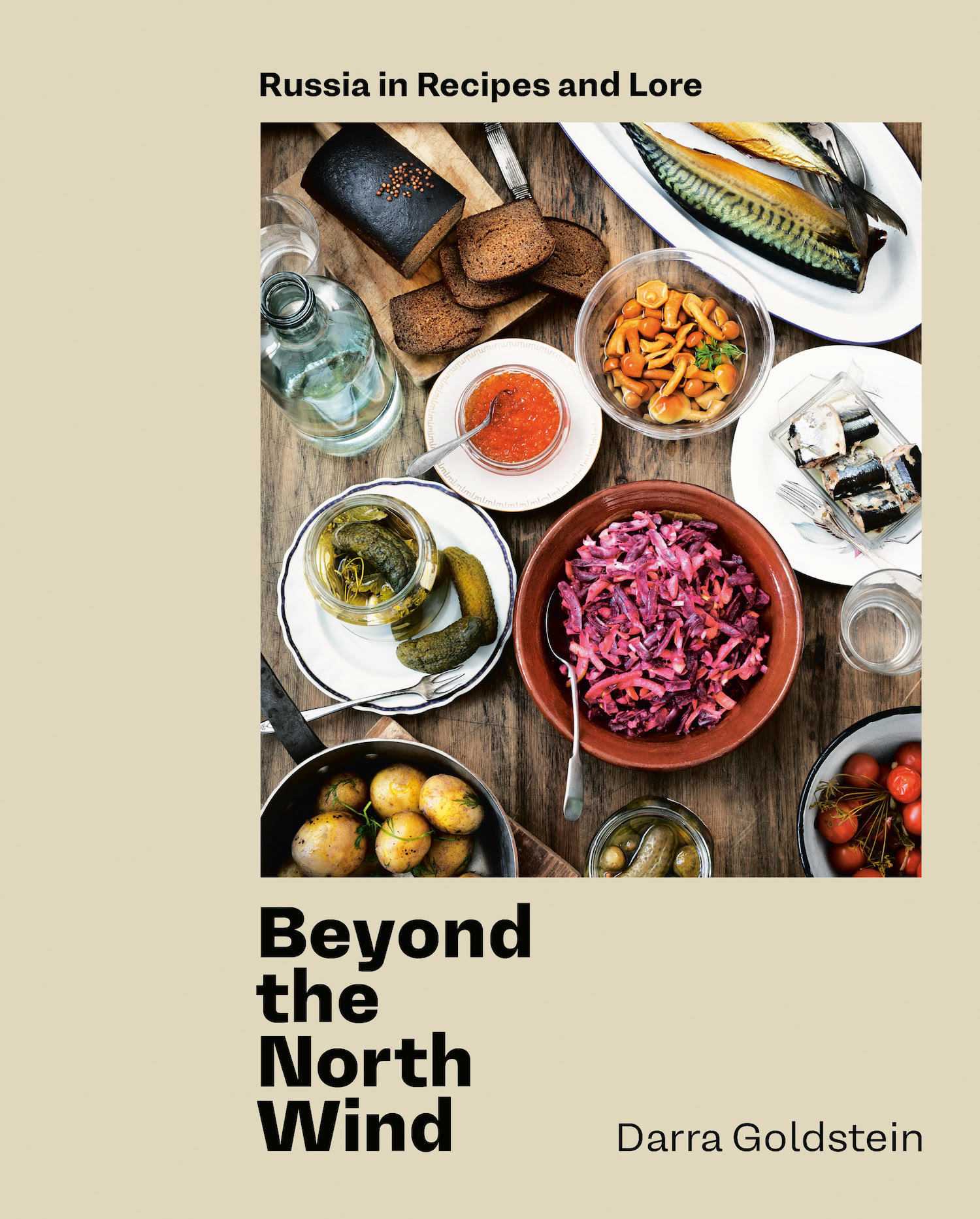
Stefan Wettainen / Ten Speed Press
In Beyond the North Wind, Cyrillic is included in red font; however, the transliterations (where Russian words are rendered in English script) aren’t completely gone, they simply live in the headnotes that precede the recipes’ ingredient lists and instructions.
Jenny Wapner—currently publisher at Hardie Grant’s North America office—was able to work closely with authors when she was executive editor at Ten Speed Press. If an author requested foreign script, she’d do what she could to get it in there. That’s not the case across the industry, however.
“Sometimes, publishers will immediately say no, and it’s like a dance, right?” Wapner said. But other times, “I feel like it’s easier to get a foreign alphabet in a book than it is to say, ask for another 50 pages.” To Wapner, while asking for another script or alphabet isn’t a huge request, “it’s enough of an issue that it’s easier for a publisher to say no.”
A strong agent can help negotiate language issues, but much turns on how likely an author is to advocate for themselves.
“Some authors don’t have that sense of entitlement,” Wapner said. These days, she said, “I do think that an author has … more of a leg to stand on now than they did 10 years ago or 15 years ago.”
For her part, Nguyen said, “I have been lucky to work with people who agree with me. If my collaborators didn’t agree with me, I would not be collaborating with them.”
